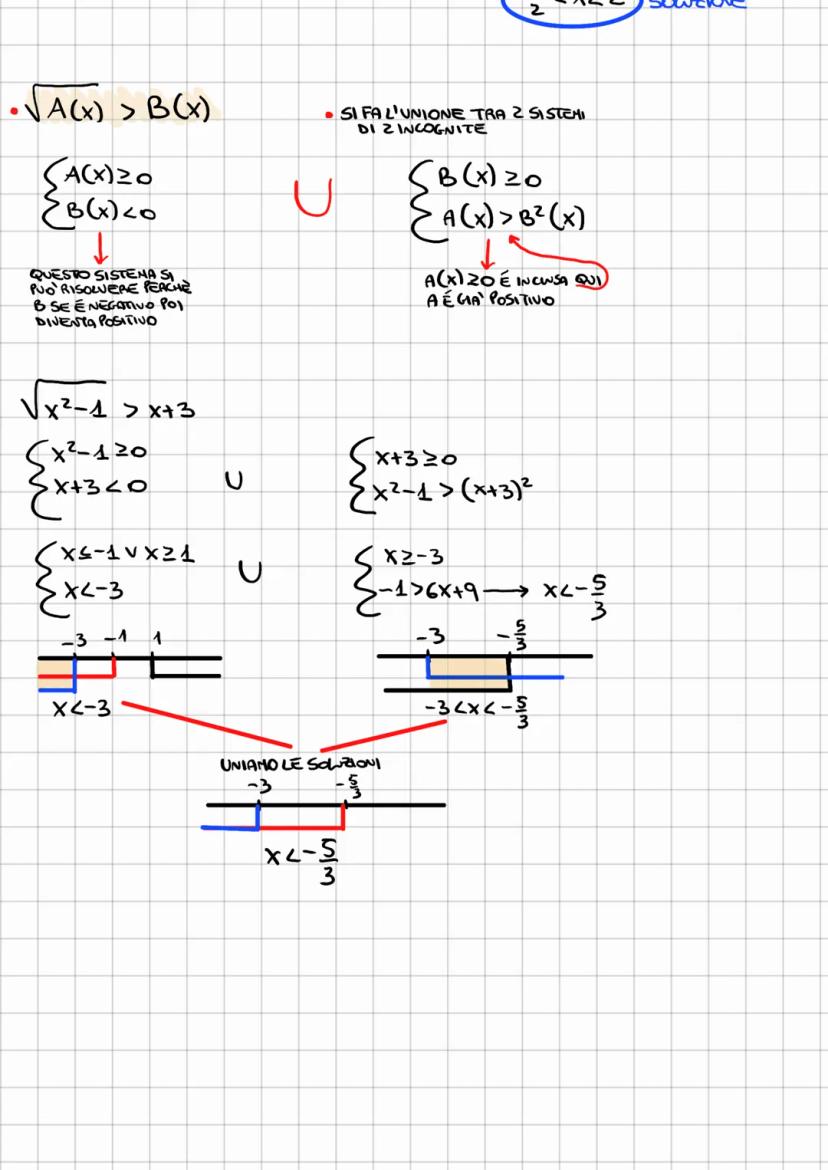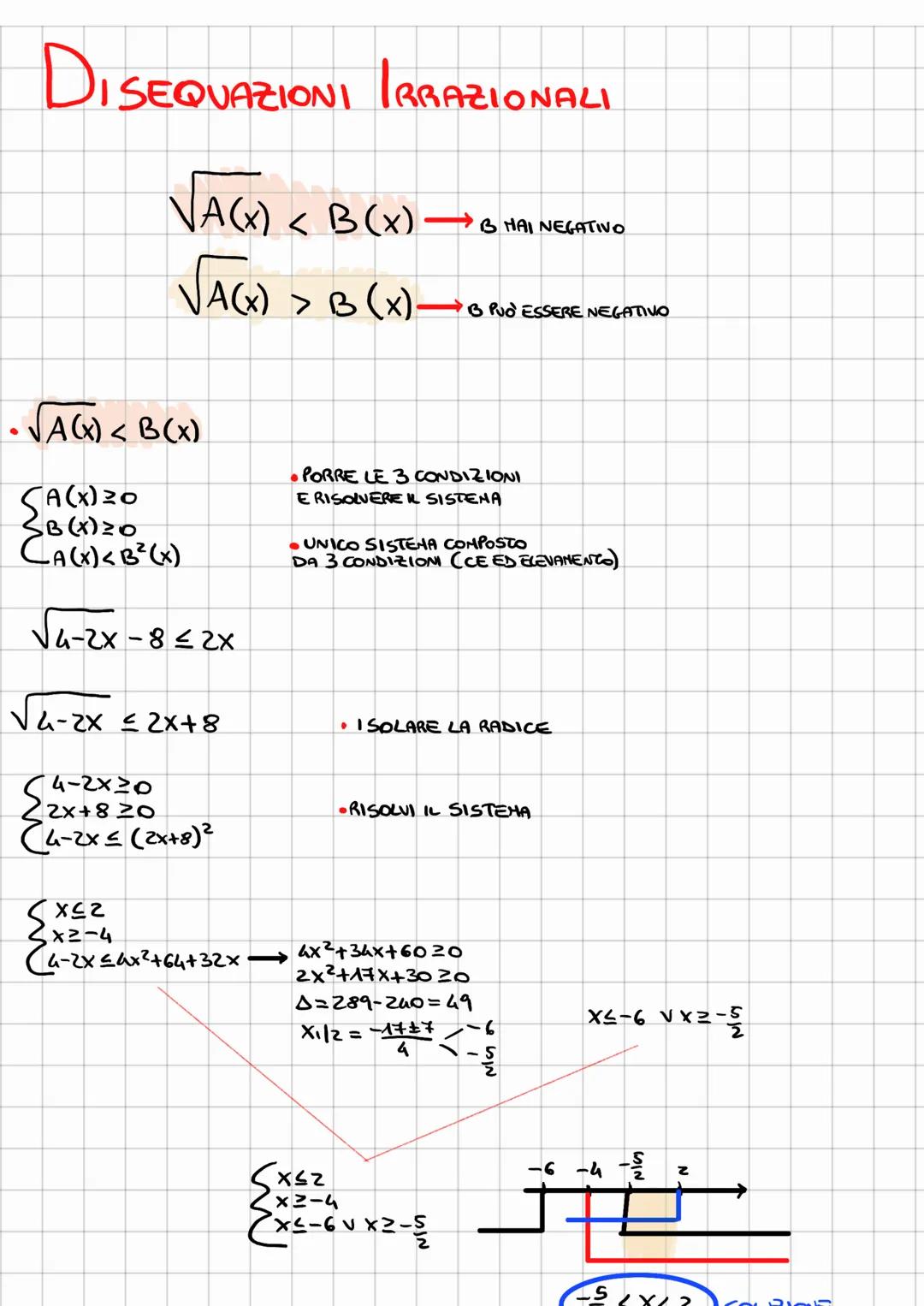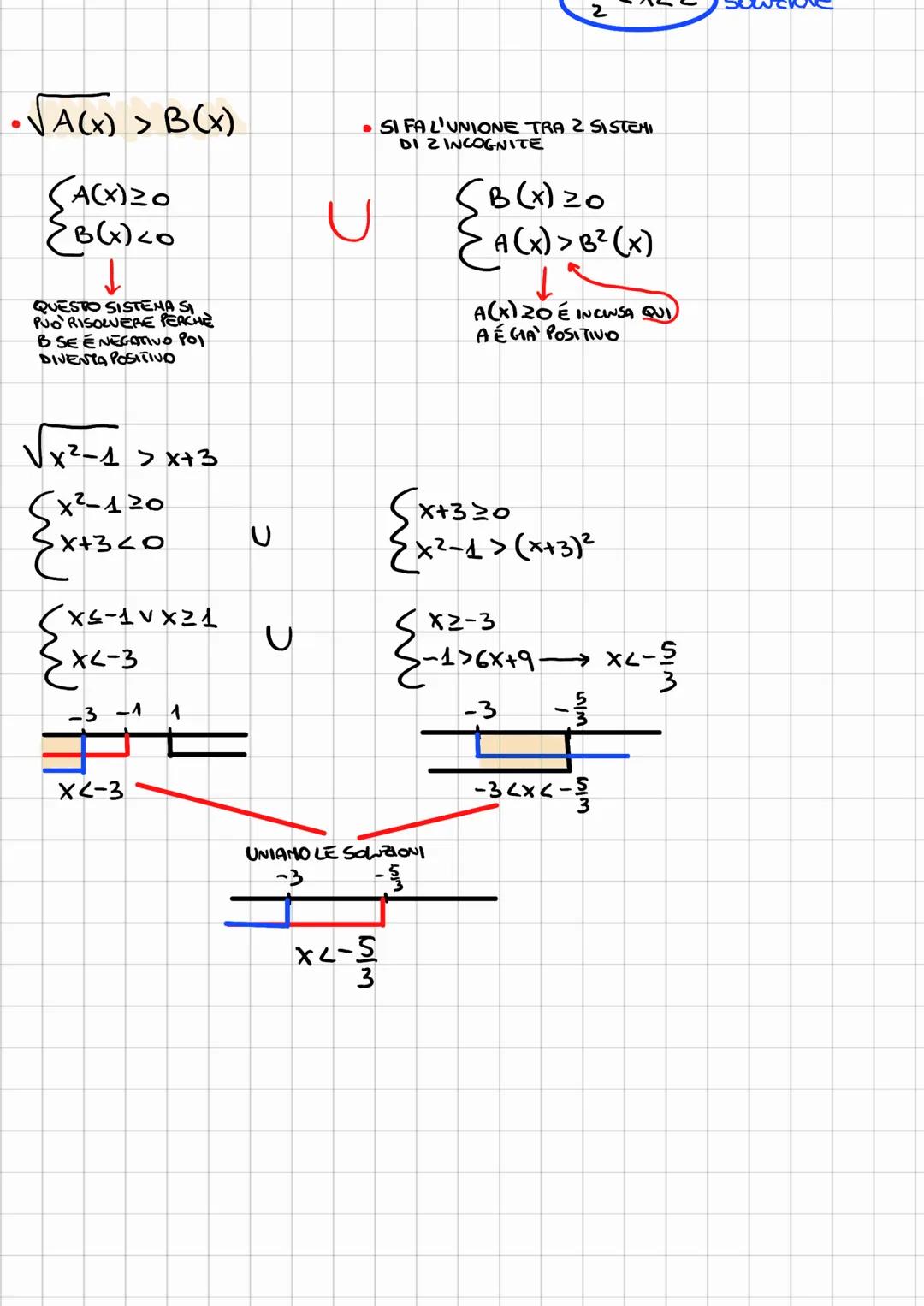Disequazioni irrazionali are mathematical inequalities involving square roots. They require careful consideration of domain restrictions and often involve solving systems of inequalities. Key techniques include isolating the radical, squaring both sides, and analyzing the resulting quadratic inequalities.
• Disequazioni irrazionali esercizi typically involve solving inequalities with square roots.
• The process often requires setting up multiple conditions to ensure valid solutions.
• Solutions may involve unions or intersections of intervals on the real number line.
• Special attention must be given to the domain of the radical expressions.
• Graphical representations can help visualize the solution sets.



















